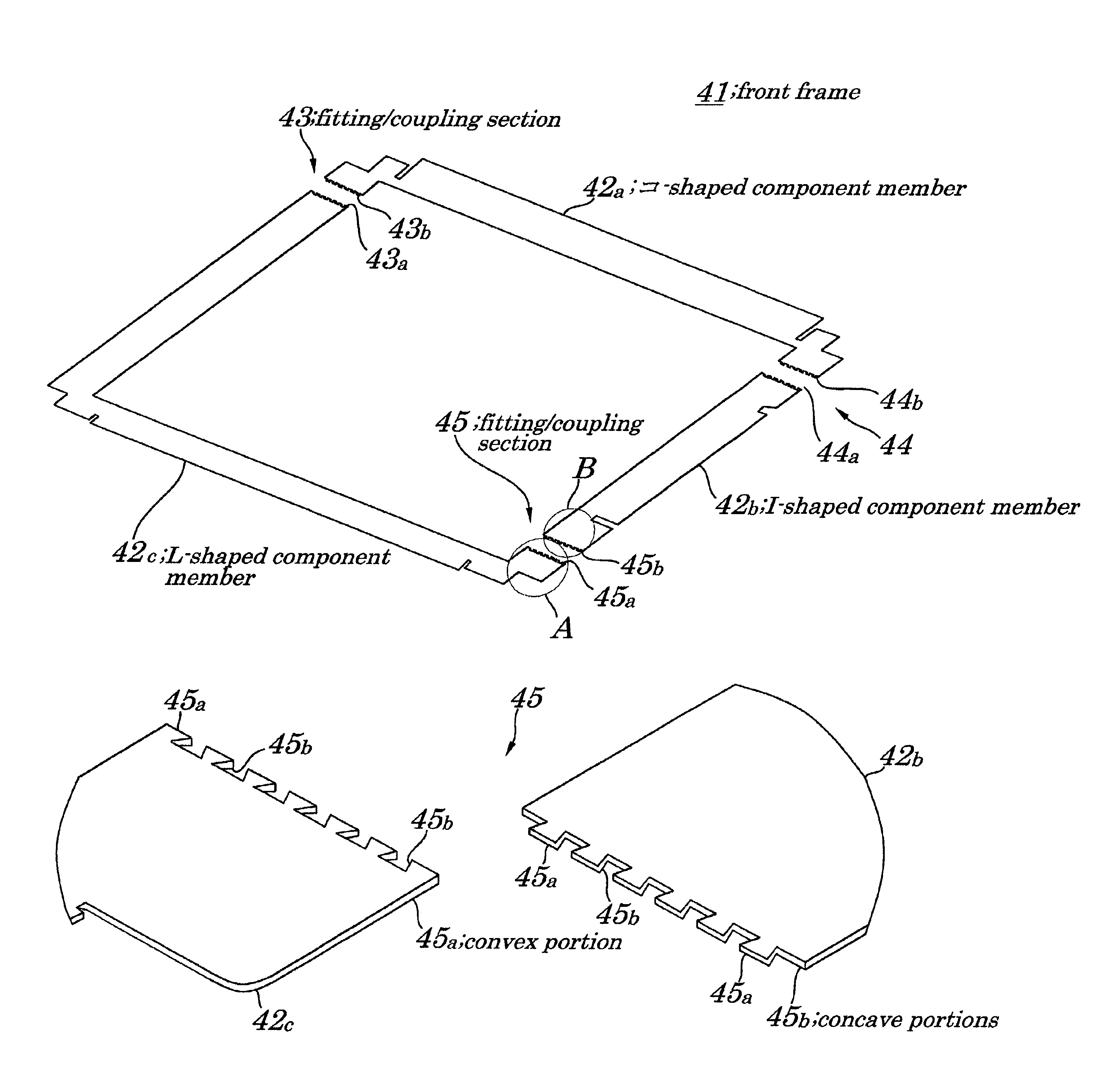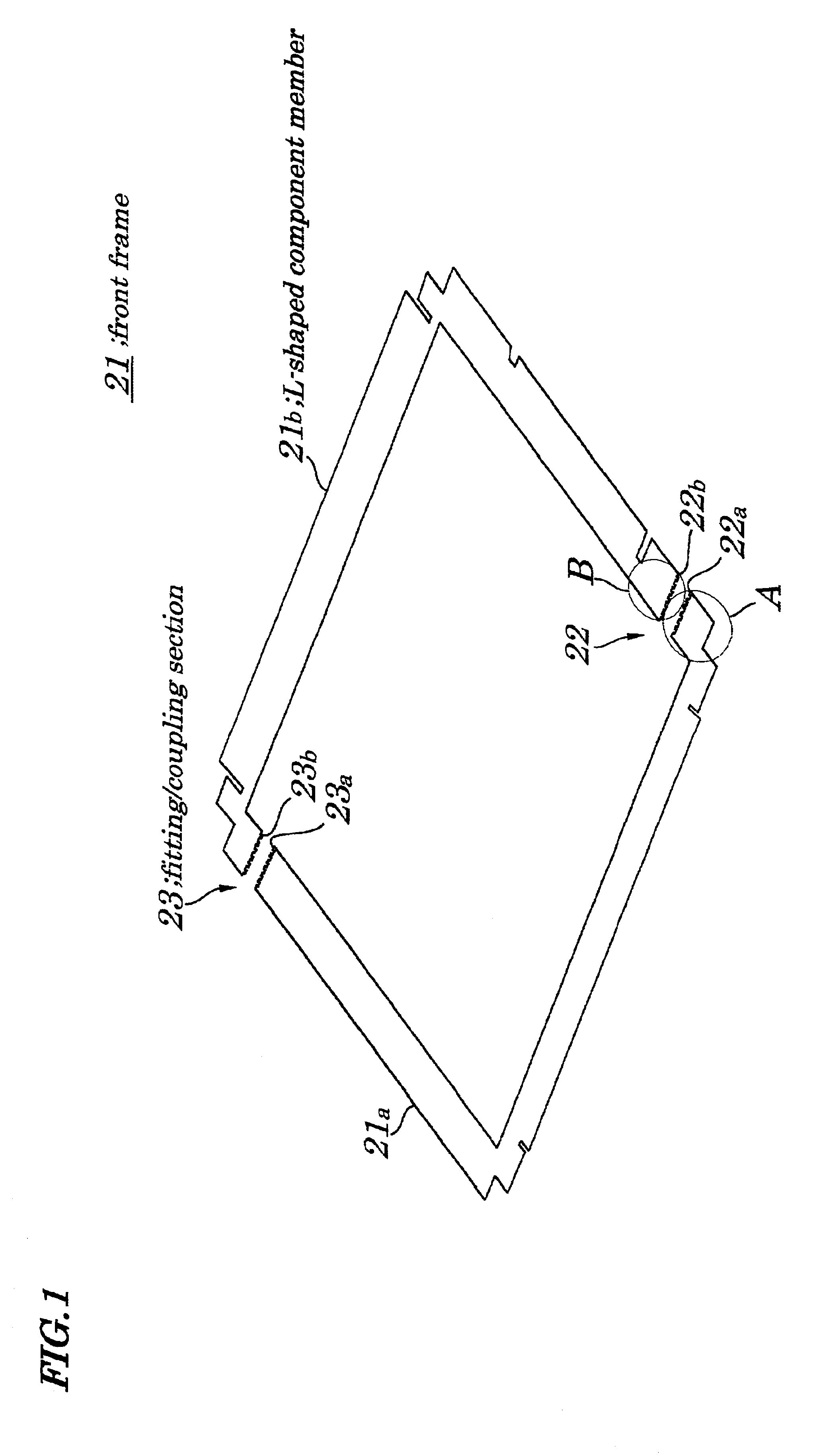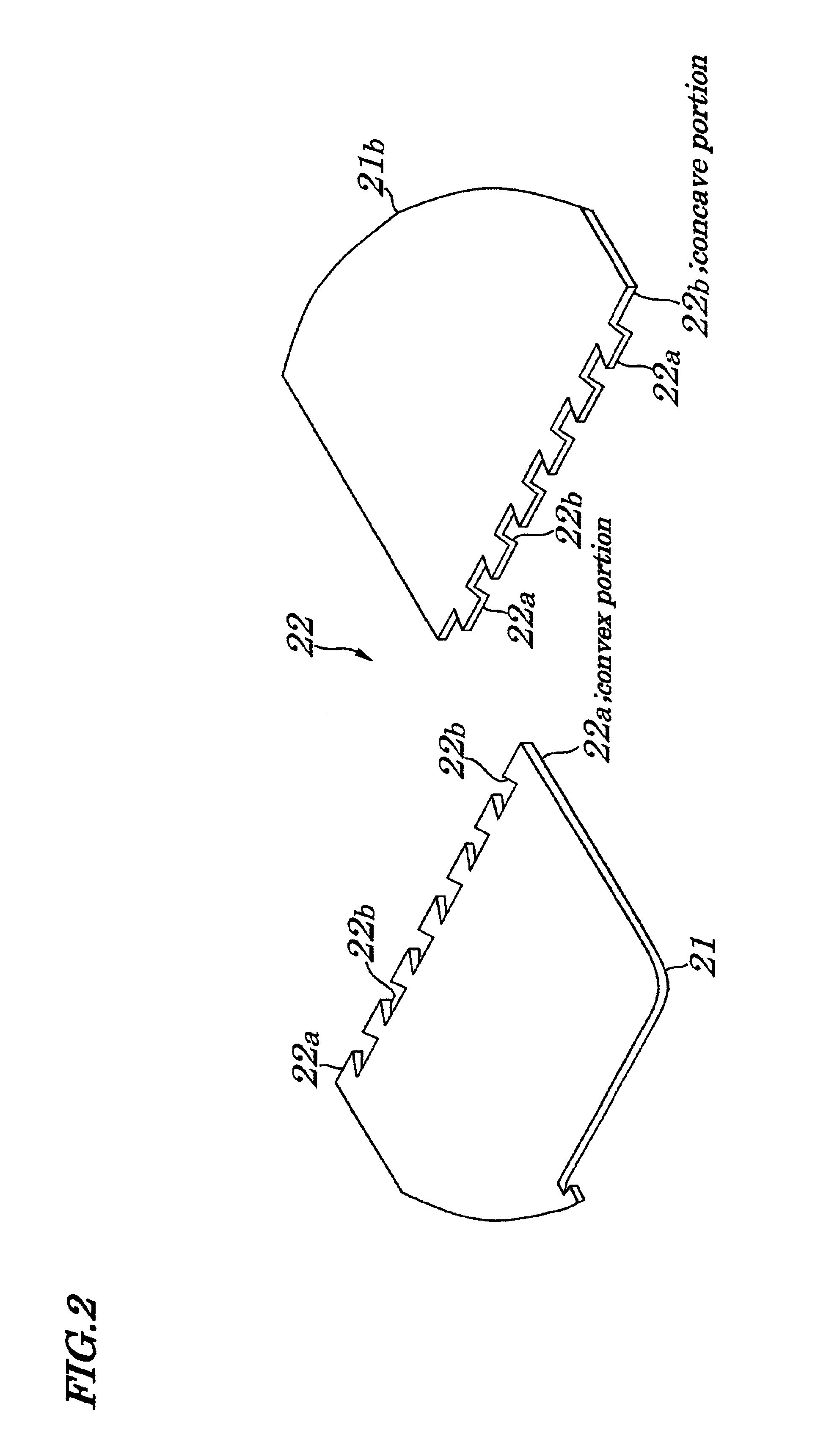Manufacturing method of support frame of display panel, support frame of display panel and display device
a technology of display panel and support frame, which is applied in the direction of identification means, instruments, television systems, etc., can solve the problems of reduced yield, long working hours, and additional special equipment to be prepared
- Summary
- Abstract
- Description
- Claims
- Application Information
AI Technical Summary
Benefits of technology
Problems solved by technology
Method used
Image
Examples
first embodiment
FIG. 1 is an exploded perspective view showing L-shaped component members 21a and 21b making up a front frame 21 in a developed state according to a first embodiment of the present invention. The front frame 21 of the first embodiment is assembled so as to have an approximately ç-shaped configuration and is made up of two L-shaped component members 21a and 21b each end portion of which is disposed in a position being slightly apart from each of corner portions in a manner so as to have an approximately L-shaped configuration. Moreover, a fitting / coupling section 22 having convex portions 22a and concave portions 22b each of the convex portions 22a and concave portions 22b having a trapezoidal configuration is provided at a place where the L-shaped component member 21a is coupled to the L-shaped component member 21b and another fitting / coupling section 23 having convex portions 23a and concave portions 23b each of the convex portions 23a and concave portions 23b having a trapezoidal ...
second embodiment
FIGS. 8A, 8B, and 8C are process diagrams explaining a method for fabricating a front frame 21 (FIG. 1) according to a second embodiment of the present invention. In FIGS. 8A, 8B, and 8C, same reference numbers are assigned to corresponding parts having same functions as those shown in FIGS. 6A, 6B, and 6C and their descriptions are omitted accordingly. In FIGS. 8A, 8B, and 8C, instead of a lower metal mold 29 and an upper metal mold 30 shown in FIGS. 6A, 6B, and 6C, a lower metal mold 33 and an upper metal mold 34 are newly provided. As a material for the lower metal mold 33 and upper metal mold 34, hardened steel called “alloyed tool steel” is generally used. A line-shaped projected portion 33a is formed on an upper surface of the lower metal mold 33 in a position being opposite to an L-shaped component member 21b and in parallel to an end face of the L-shaped component member 21b and in a place being apart by a specified distance from the end face of the L-shaped component member...
third embodiment
FIG. 9 is an exploded perspective view of a -shaped component member 42a. an I-shaped component member 42b, and an L-shaped component member 42c making up a front frame 41 in a developed state according to a third embodiment of the present invention.
The front frame 41 of the third embodiment is assembled so as to have an approximately □-shaped configuration and is made up of an approximately -shaped component member 42a making up its upper portion, an approximately I-shaped component member 42b making up its right side portion, and an approximately L-shaped component member 42c making up its left side portion and its lower portion. A fitting / coupling section 43 having trapezoidal convex portions 43a and trapezoidal concave portions 43b is provided at a place where the -shaped component member 42a is coupled to the approximately L-shaped component member 42c, a fitting / coupling section 44 having trapezoidal convex portions 44a and trapezoidal concave portions 44b is provided at a pla...
PUM
| Property | Measurement | Unit |
|---|---|---|
| frequency | aaaaa | aaaaa |
| specific gravity | aaaaa | aaaaa |
| thickness | aaaaa | aaaaa |
Abstract
Description
Claims
Application Information
 Login to View More
Login to View More - R&D
- Intellectual Property
- Life Sciences
- Materials
- Tech Scout
- Unparalleled Data Quality
- Higher Quality Content
- 60% Fewer Hallucinations
Browse by: Latest US Patents, China's latest patents, Technical Efficacy Thesaurus, Application Domain, Technology Topic, Popular Technical Reports.
© 2025 PatSnap. All rights reserved.Legal|Privacy policy|Modern Slavery Act Transparency Statement|Sitemap|About US| Contact US: help@patsnap.com



